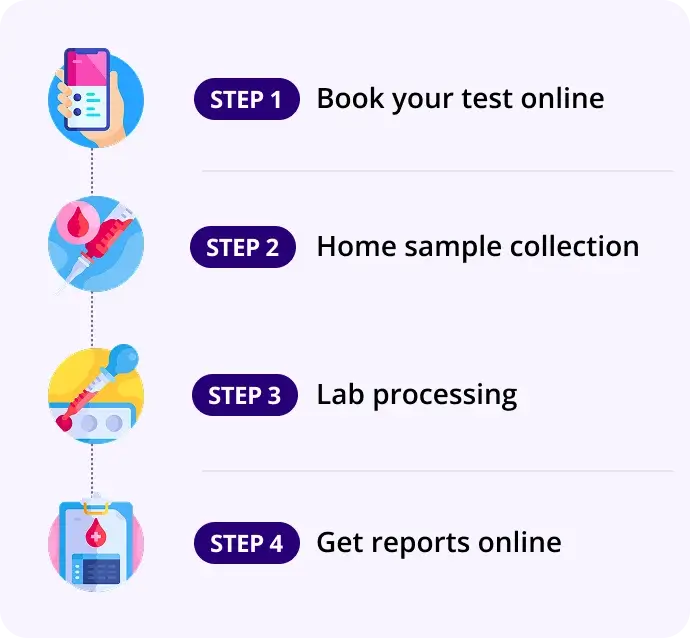ESR (Erythrocyte Sedimentation Rate)
Report in 16Hrs
At Home
No Fasting Required
Details
Erythrocyte sedimentation rate; elevated in chronic inflammation, autoimmune disease, or infection.
₹79₹200
61% OFF
🧪 What is ESR (Erythrocyte Sedimentation Rate)?
ESR measures how quickly red blood cells (RBCs) settle at the bottom of a test tube over one hour. When inflammation is present, certain proteins (like fibrinogen) cause RBCs to clump together and fall faster, increasing the ESR.
- It’s a non-specific marker of inflammation, not diagnostic of any one condition.
- Often used to monitor or screen for inflammatory, infectious, or autoimmune conditions.
❓ Why is the ESR Test Done?
To:
- Detect inflammation in the body
- Monitor chronic inflammatory diseases (e.g., rheumatoid arthritis, lupus)
- Help diagnose autoimmune conditions
- Evaluate infection or malignancy
- Monitor disease activity and treatment response
📊 Normal ESR Ranges
Group | Normal ESR (mm/hr) |
|---|---|
Men (under 50) | 0 – 15 mm/hr |
Men (over 50) | 0 – 20 mm/hr |
Women (under 50) | 0 – 20 mm/hr |
Women (over 50) | 0 – 30 mm/hr |
Children | 0 – 10 mm/hr |
🔍 Values may vary slightly by lab. ESR tends to be naturally higher in women, elderly, and during pregnancy.
📈 Interpretation of Results
ESR Level | Possible Causes |
|---|---|
🔺 High ESR | - Inflammation (e.g., arthritis, vasculitis) |
🔻 Low ESR | - Polycythemia vera |
🔬 How is ESR Measured?
- Blood is placed in a vertical tube (Westergren or Wintrobe method).
- After 1 hour, the distance (in mm) the red blood cells have fallen is measured.
- Higher values indicate faster settling → suggesting more inflammation.
🧠 Associated Organs and Conditions
Organ/System | Relevance |
|---|---|
Immune system | Inflammatory and autoimmune activity affects ESR |
Bones/Joints | RA, osteomyelitis, etc. elevate ESR |
Lungs | TB or infections increase ESR |
Kidneys | Nephritis or CKD with inflammation raise ESR |
Blood | RBC abnormalities (sickle cell, anemia) can falsely lower ESR |
🔄 Related / Follow-Up Tests
- CRP (C-Reactive Protein) – More specific and responsive inflammatory marker
- CBC – To check WBCs, hemoglobin, anemia
- Rheumatoid Factor (RF) – In suspected autoimmune arthritis
- ANA (Antinuclear Antibody) – For SLE or connective tissue disease
- Procalcitonin – In sepsis or bacterial infection suspicion
- Serum Protein Electrophoresis – For multiple myeloma
- Imaging (X-ray/MRI/CT) – If local inflammation is suspected
⚠️ Limitations of ESR
- Non-specific: Raised ESR doesn’t tell you the exact cause.
- Slow to change: May lag behind clinical improvement or worsening.
- Affected by:
- Age
- Sex
- Pregnancy
- Anemia
- Plasma proteins
📝 Summary
Parameter | Summary |
|---|---|
What | Rate at which RBCs settle in 1 hour; reflects inflammation |
Why | To detect or monitor inflammation, infection, autoimmune disease, cancer |
Normal Range | Men: 0–15 mm/hr, Women: 0–20 mm/hr (younger adults) |
High ESR | Inflammation, chronic infection, autoimmune disease, cancer |
Low ESR | Polycythemia, sickle cell, hyperviscosity |
Next Steps | CRP, CBC, autoimmune panel, imaging, depending on symptoms |
How our test process works!

